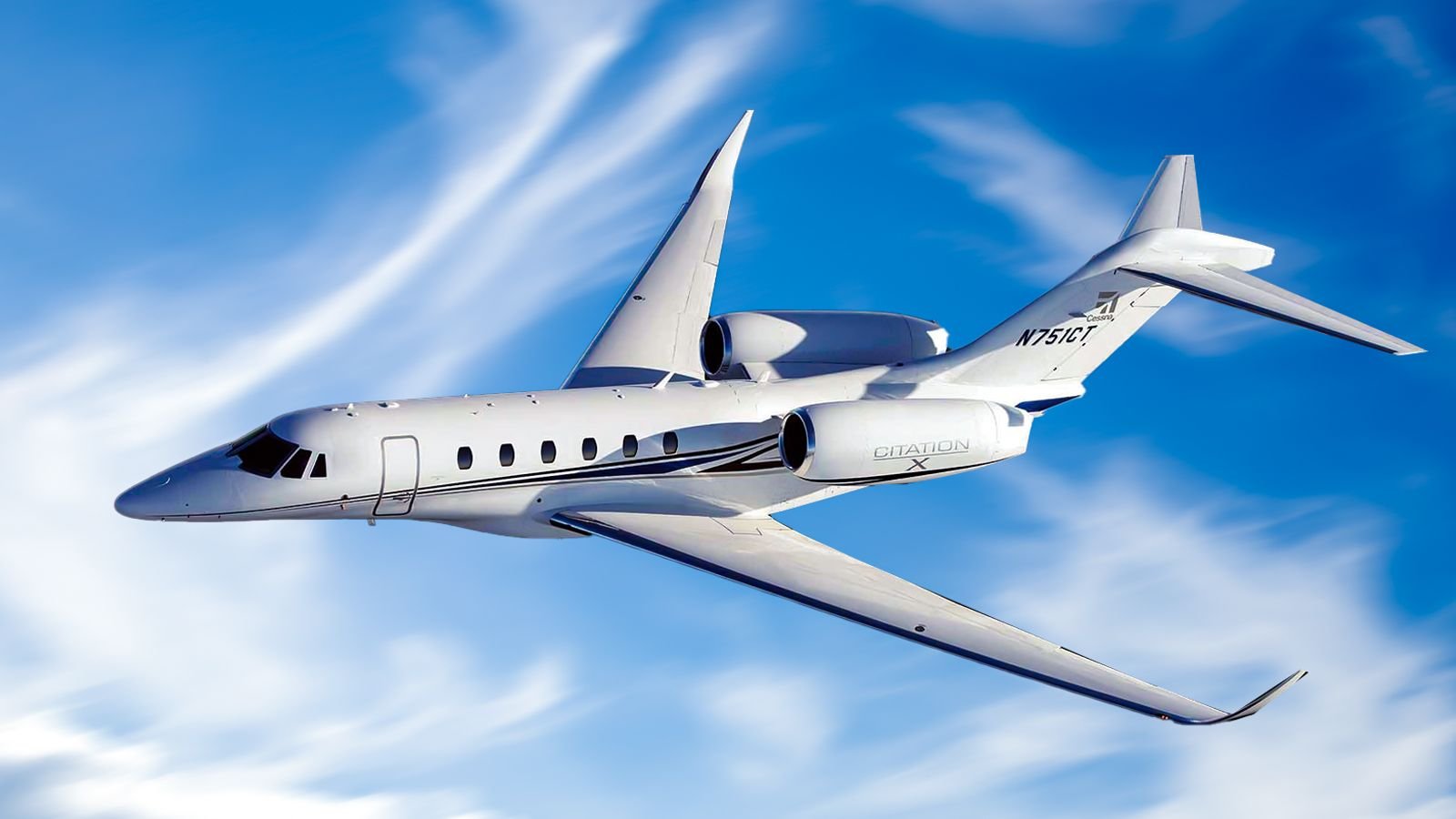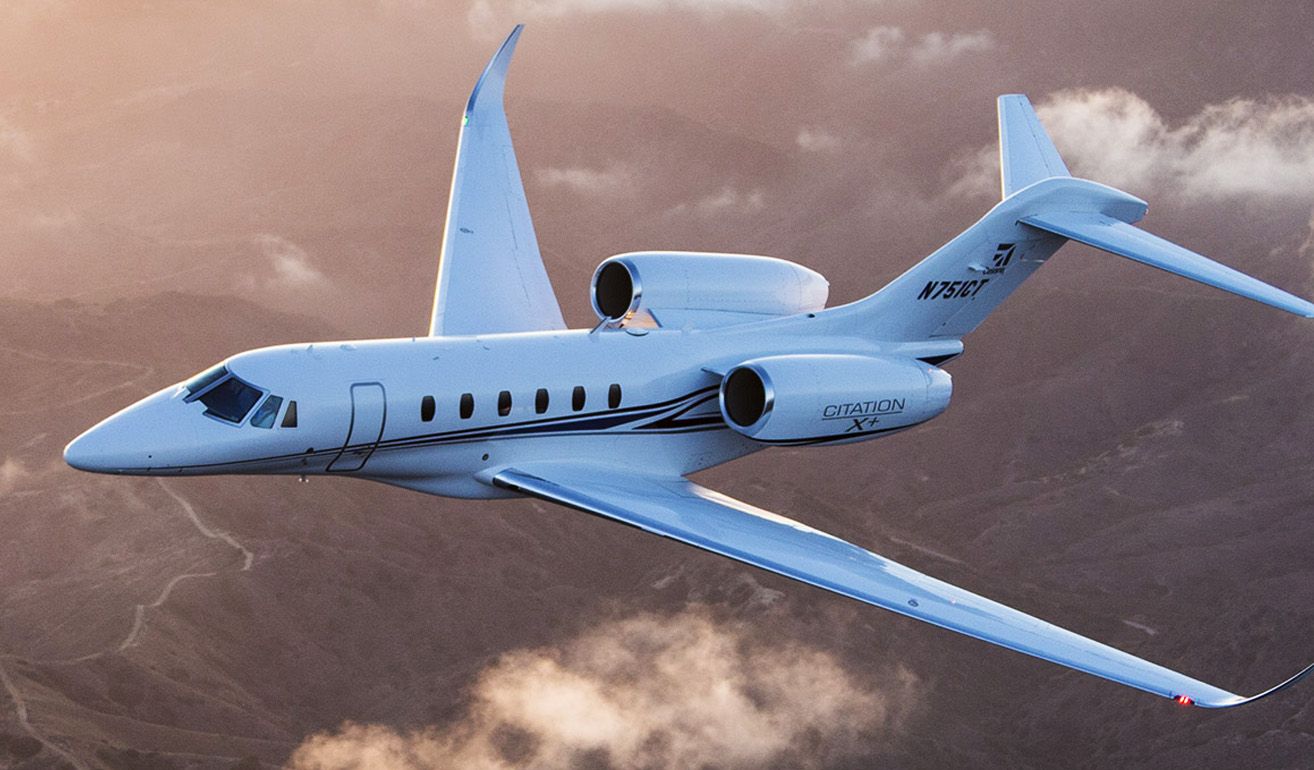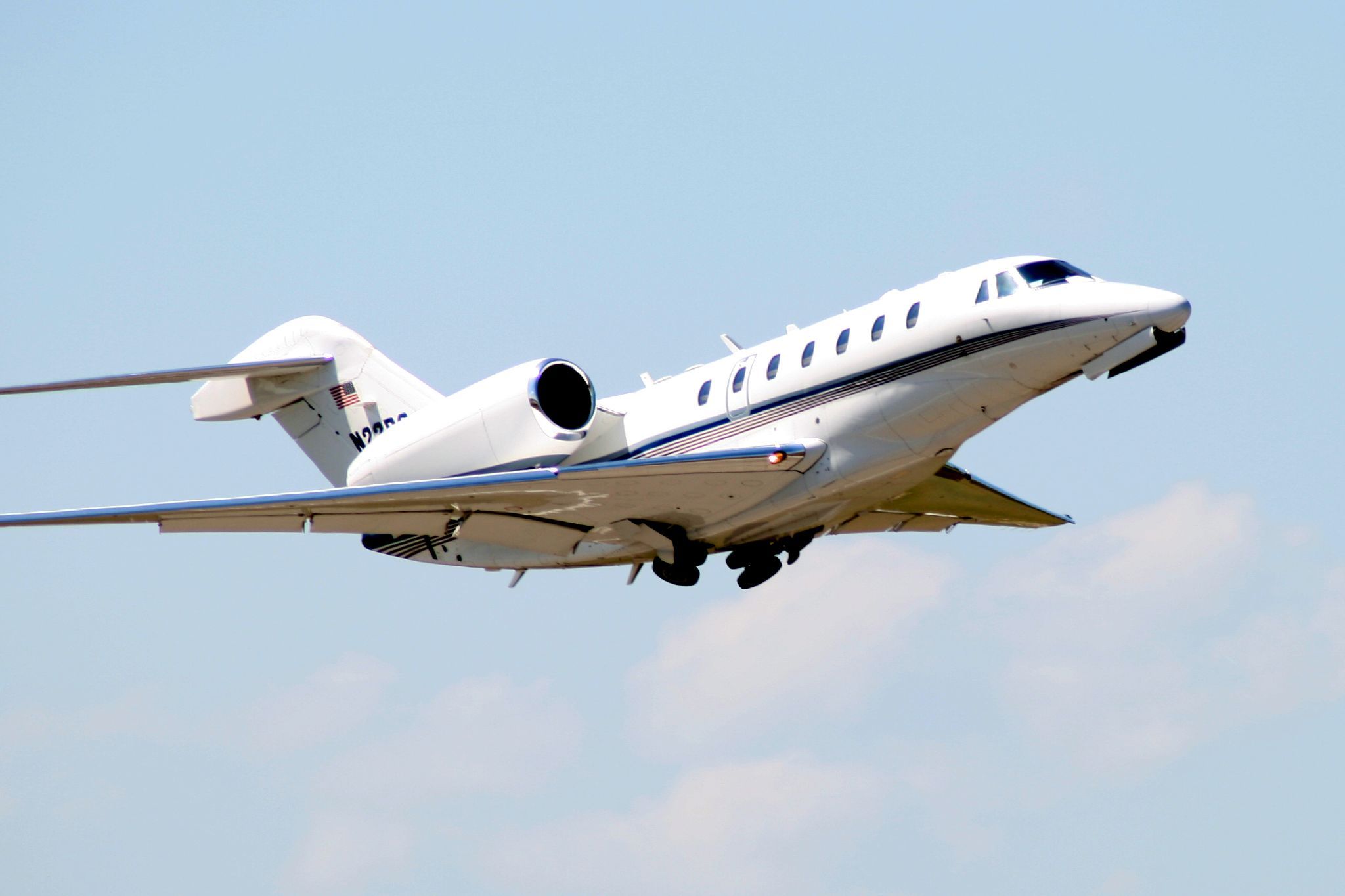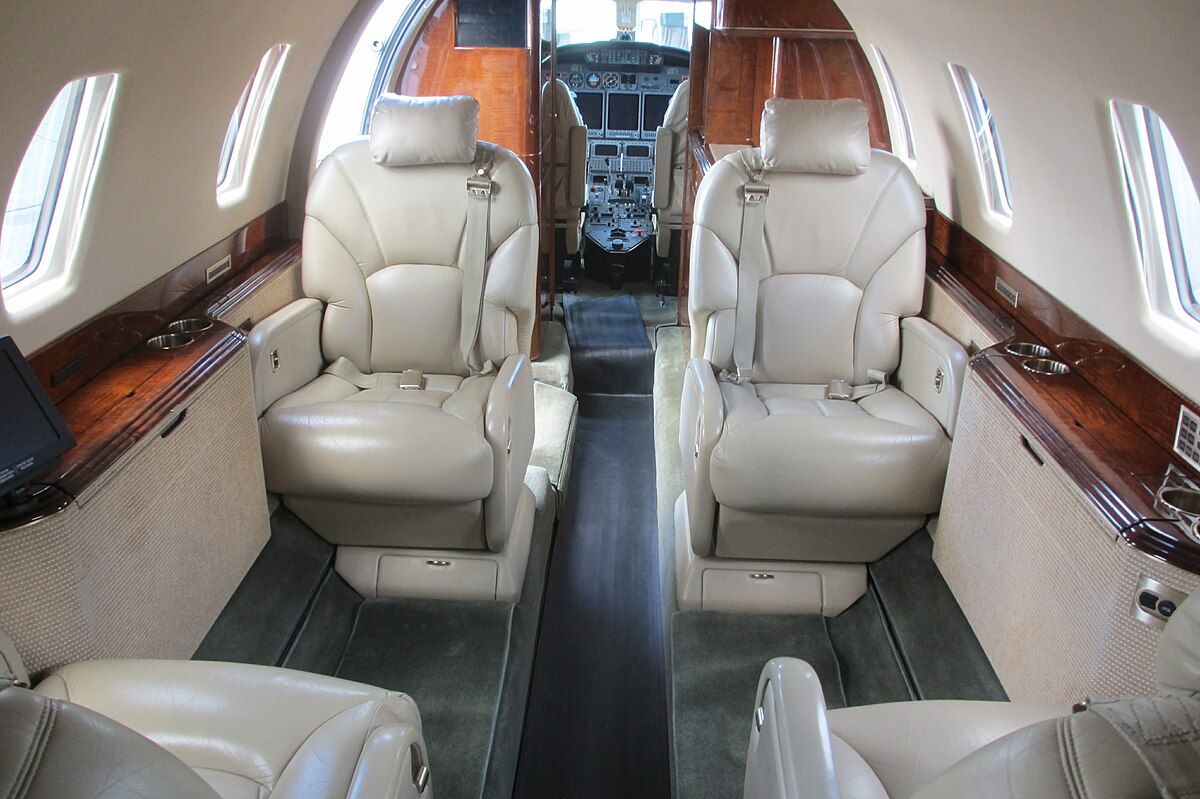Summary
- Citation X was the fastest business jet of its day, with a top speed of Mach 0.92.
- The upgraded Citation X+ had improved aerodynamics, larger wingspan, fuel efficiency and a bigger cabin.
- Cessna stopped production of the Citation X series in 2018 due to changing market needs.
The Cessna Citation X was first introduced in 1990 and ceased production in 2018, after a 22-year run. What made this business jet one of the fastest in the world and what are some of its features?
Introduction to the Citation X
Cessna first announced the Cessna Citation X in 1990 at the National Business Aviation Association (NBAA) conference. It took a lengthy 6 years for it to finally be certified by the Federal Aviation Administration (FAA). The aircraft was easily recognizable by its distinctive high-swept wing.
The first version
When first released, the Citation X had a top speed of Mach 0.92 and a maximum cruise speed of Mach 0.90. It could take 9 to 12 business executives on intercontinental trips with a range of 3,460 nautical miles (6,410 km). The Rolls-Royce AE3007 engines provided 6.764 pounds of thrust.
Photo: Europair
The Citation X was fitted with the Honeywell Primus 2000 EFIS flight director system, which had five screens and dual flight management systems with GPS. It was upgraded in 2011 to the Honeywell Primus Elite avionics suite with high-resolution LCD screens.
Notable dates
- First flight of Citation X: December 21, 1993
- Type certification received: June 3, 1996
- First delivered: July 1996
- Citation X+ first flight: May 2013
- First delivered: June 2014
- Final Citation delivery: December 2018
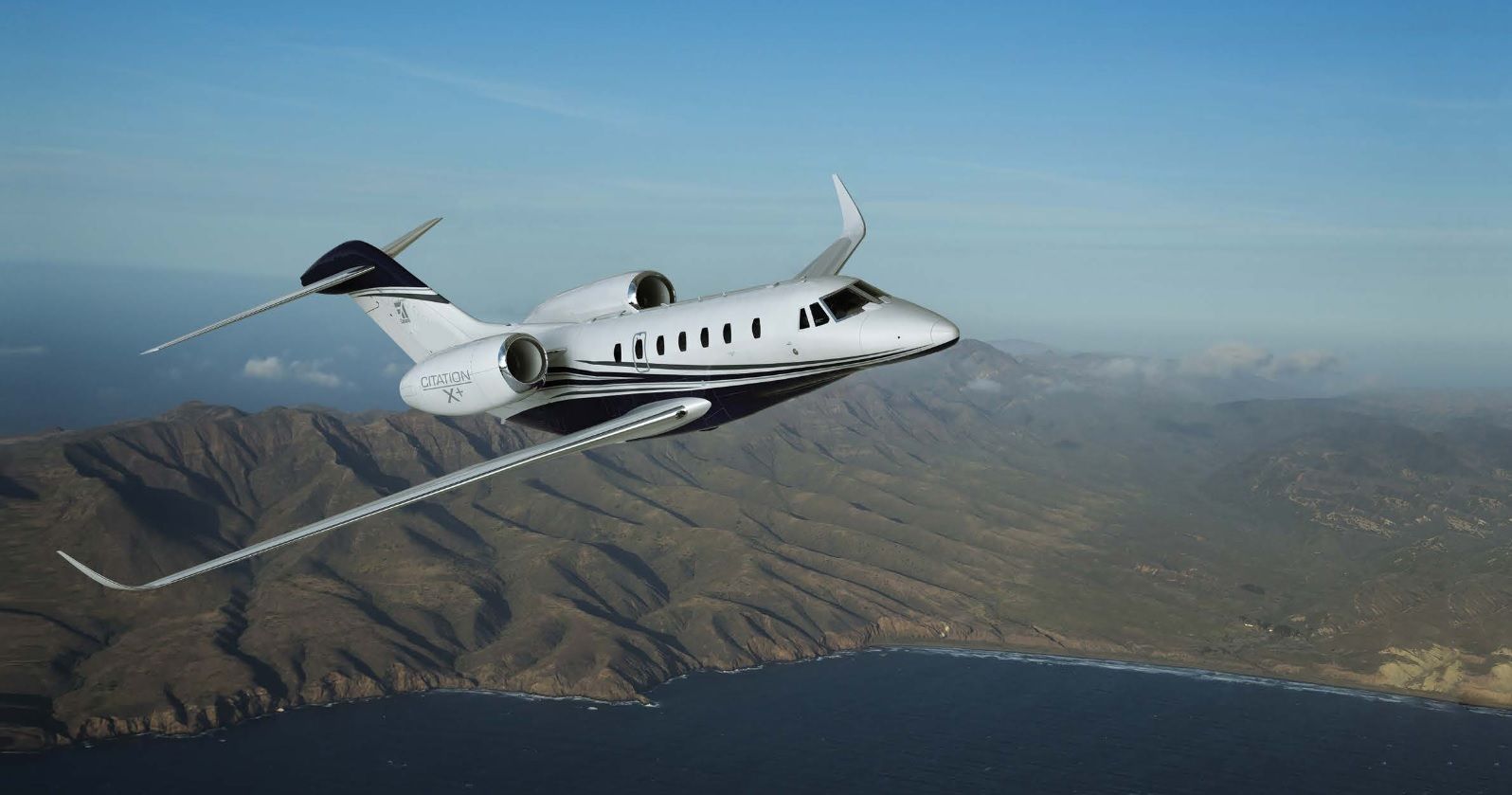 The upgraded Citation X+
The upgraded Citation X+
The upgraded Citation X+ had a more streamlined design with enhanced aerodynamics and a larger wingspan and a high-swept wing. Winglets were added to the wing, to reduce drag making it more fuel-efficient than its predecessor. The winglets increased the aircraft’s range by 150 nautical miles and lowered fuel burn by 5%. The fuselage was lengthened therefore the cabin was slightly bigger than that of the Citation X. The original avionics were upgraded to the Garmin G5000 with advanced features and three 14″ screens.
The improved Rolls-Royce AE3007C2 engines increased thrust to over 7,000 pounds. This gave the jet a maximum top speed of Mach 0.935 or 717 miles per hour, just inching over that of the original Citation X. A trip from London to New York would take six hours on the Citation X, whereas the Citation X+ with more powerful engines and improved design could shave that down to five and a half hours. The Citation X took just 24 minutes for it to climb through to a flight level of 47,000 feet. It was the fastest civilian aircraft in the world at that time.
Speed comparison
Citation X maximum speed: Mach 0.92 or 706 miles per hour
Citation X+ maximum speed: Mach 0.935 or 717 miles per hour
Citation X and X+ cruise speed: 528 knots or 607 miles per hour
Citation X and X+ minimum control speed: 114 knots or 131 miles per hour
Specifications
|
Variant |
Citation X |
Citation X+ |
|---|---|---|
|
Crew |
2 |
|
|
Passengers |
Up to 12 |
|
|
Length |
72.53 ft (22.04 m) |
73 ft 7 in (22.43 m) |
|
Span |
63.6 ft (19.39 m) |
69 ft 2 in (21.08 m) |
|
Height |
19.2 ft (5.85 m) |
19 ft 3 in (5.87 m) |
|
Wing area |
527ft² (48.96 m2) |
|
|
Empty weight |
22,131 lb (10,038 kg) |
|
|
Max. takeoff weight |
35,700-36,100 lb (16,193-16,375 kg) |
36,600 lb (16,600 kg) |
|
Fuel capacity |
13,000 lb (5,897 kg) |
|
|
Turbofans |
2 × AE3007C/C1 |
2 × AE3007C2 |
|
Thrust |
2 × 6442-6764 lbf (28.66-30.09 kN) |
2 × 7,034 lbf (31.29 kN) |
|
Max speed |
Mach .92 |
Mach .935 (536 kn; 993 km/h) |
|
Cruise speed |
528 kn (978 km/h) |
|
|
Minimum control speed |
114 kn (211 km/h) |
|
|
Range |
3,460 nmi (6,410 km) |
|
|
Ceiling |
51,000 ft (15,545 m) |
|
|
Time to altitude |
24 min to Flight level 470 |
|
Competition and changing market needs
Both the Citation X and Citation X+ had a similar list price of around $25 million when released. It did have a competitor in Cessna’s new Citation Longitude which was their largest private jet to date – this was a similar price to the Citation X and X+ but offered more in terms of cabin size and performance. The private jet market had also changed and the fastest jet was less desirable, with comfort and long-range capabilities becoming more important. Cessna decided it would be prudent to stop production of the Citation X series in 2018.
In conclusion
The Citation X was the fastest business jet of the 2000s with a top speed of Mach 0.935 and 339 Citation X and Citation X+ were built between 1996 and 2018. The aircraft later shared the title of fastest business jet with the Gulfstream G700 but might be ousted again by the new Bombardier Global 8000, which has a top speed of Mach 0.94. However, the Citation X is still faster with an average cruise speed of 0.85.
Famous owners of the aircraft include the golfer Arnold Palmer, Formula One driver Nelson Piquet, film director Sydney Pollack and ex-US president Donald Trump. NetJets is the largest operator of the Citation X and Citation X+ fleet. They ordered 60 Citation X originally and then added 21 Citation X+. Now they still have a close relationship with Cessna/Textron Aviation and have added the Citation Longitude and Latitude to their fleet and now the Citation Ascend.

